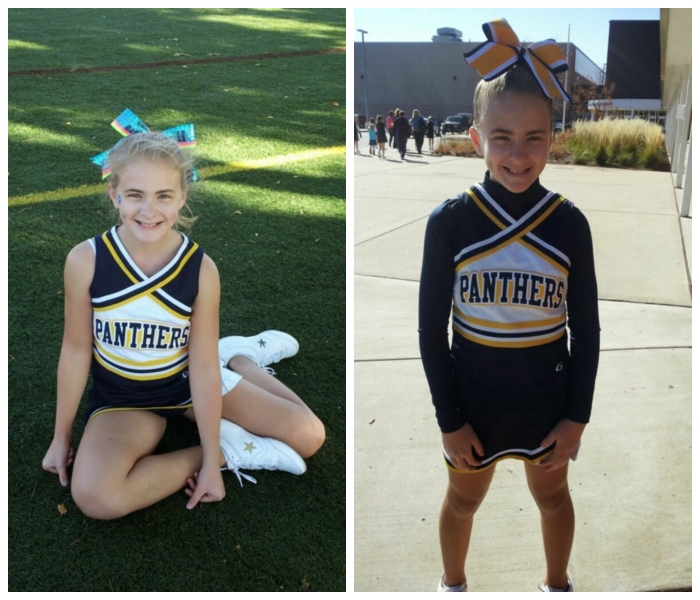The impact of physical pain
March 22, 2019
Photos courtesy of Bailey McCoy
McCoy was a cheerleader for eight years before her ankle injury. After she quit, she needed two surgeries on her ankle; however, doctors are still unaware of the cause of her pain.
Although everyone grieves when someone close to them dies, McCoy’s grandpa is not the only grief she has experienced — McCoy lost most of her ability to do physical activity when she was eight.
For eight years, McCoy was a cheerleader. At the age of six, her left ankle began popping and at the age of eight, her ankle began to go numb. This injury has been recurring ever since.
“It can be numb between … the shortest time it’s ever been is 15 minutes, the longest time it’s ever been is two hours depending on how hard the pop is. I’ve seen eight doctors, I’ve had two surgeries, I’ve had multiple scans and nobody knows what’s wrong with me,” McCoy said.
Many doctors prescribed her physical therapy; however, because the doctors were unaware of what was causing her ankle pain, the therapists did not know what they were treating, therefore, making the therapy ineffective.
As she grew older, McCoy was unable to continue her cheerleading career; it wasn’t until her freshman year that she tried out for another sport. During her freshman year of high school, McCoy had to have three surgeries within three months: two on her ankle and one on her tailbone because of a cyst.
“When I quit [cheerleading], most of the muscles in my body shrunk because I went from being super, super active to not at all, which has caused a lot of injuries within my body. My hips and my muscle went from big and loose to rock solid. So, therefore, it hurts to move my legs. My back muscles down my spine shrunk and they don’t cover my ribs so my ribs pop in and out of place all the time and they’re not hard to get back in because there’s no muscle there to hold it in place,” McCoy said.
Senior Ginny Curtis has known McCoy since the eighth grade, which was around the time she had her first surgery on her ankle.
“I feel like she thinks about it a lot and internalizes it. You know some days it affects her mood and sometimes it doesn’t. But I think she is very into sports and I think [that the loss of activity] has had an emotional scar on her,” Curtis said.
As McCoy continues to move forward from her losses, Megan McCoy recognizes how these experiences have impacted her daughter.
“Unfortunately, I think she’s grown up a little bit faster. I think she’s more in touch with her own feelings and expressing them with those that she knows she can trust. … She’s learning to live each day differently. She takes more value in the time that she has with people, with friends and family that matter. She tries to take those occasions a little bit more wholeheartedly than she did before. She’s not one to live with any regret,” Megan McCoy said.
Junior Tara Pikey, although acknowledges the negative impact of death and loss, chooses to look at the positive effects it has had on Bailey McCoy.
“I think it’s really affected her in a good way really. Having been through all of this stuff that’s terrible, … it’s given her a lot of ways to help other people because she knows so much about how to deal with that kind of stuff and how to really tell someone and how to make them feel a lot better. … She showed me really that I can get through a lot more than I think I can and she’s impacted the way that I handle that situation, the way I deal with it because she’s like a role model to me,” Pikey said.
